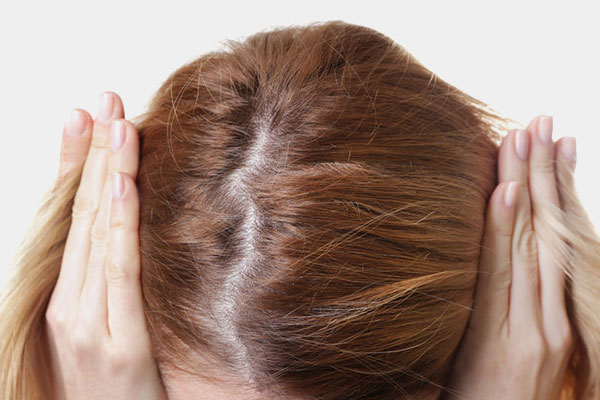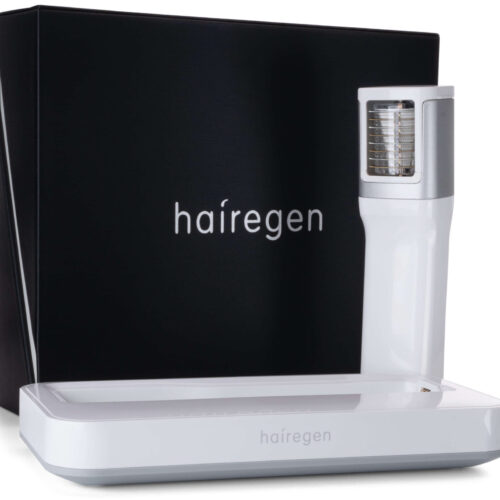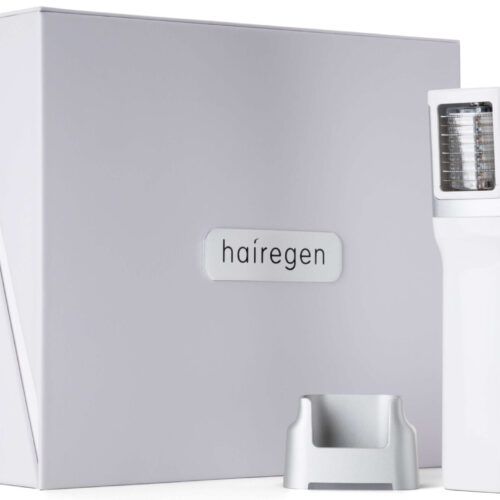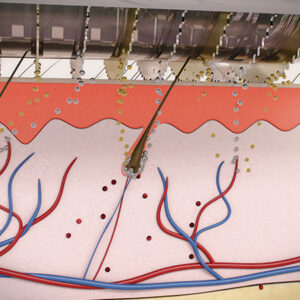Hair loss is a common concern that affects millions of women worldwide, often leading to decreased self-esteem and emotional distress. While traditionally associated with men, a significant percentage of women also experience hair thinning and loss as they age. Fortunately, advancements in hair care science have introduced various treatment options, including DHT blockers, which have shown promising results in combating female pattern hair loss.
This comprehensive guide delves into the world of DHT blockers for women, exploring their effectiveness, safety, and potential as a hair loss treatment. We’ll examine the science behind DHT, discuss various types of blockers available, and provide insights into alternative solutions for those seeking to restore their luscious locks.

Understanding DHT and Its Role in Hair Loss
Dihydrotestosterone, commonly known as DHT, is a hormone that plays a crucial role in hair loss for both men and women. While it’s more prevalent in males, females also produce this hormone, albeit in smaller quantities. DHT is derived from testosterone through the action of an enzyme called 5-alpha reductase.
The DHT-Hair Loss Connection
In individuals genetically predisposed to hair loss, DHT can bind to hair follicle receptors, causing them to shrink over time. This process, known as miniaturization, leads to the production of thinner, weaker hair strands that eventually stop growing altogether. As a result, the hair becomes more sparse, and bald patches may appear.
DHT Levels in Women
Although women typically have lower levels of DHT compared to men, some may experience an increase in DHT production due to various factors such as hormonal imbalances, certain medical conditions, or genetic predisposition. This excess DHT can contribute to female pattern hair loss, making DHT blockers a potential solution for affected women.
Types of DHT Blockers for Women
DHT blockers work by inhibiting the conversion of testosterone to DHT or by preventing DHT from binding to hair follicle receptors. There are several types of DHT blockers available for women, ranging from prescription medications to natural remedies.
Prescription DHT Blockers
Topical Finasteride: While oral finasteride is not typically recommended for women due to potential side effects, topical formulations have shown promise in treating female pattern hair loss with fewer systemic effects.
Topical Dutasteride: Similar to finasteride, dutasteride is available in topical form and may be prescribed to women experiencing hair loss.
Over-the-Counter DHT Blockers
Ketoconazole Shampoo: Originally developed as an antifungal treatment, ketoconazole has shown potential in reducing DHT levels in the scalp when used regularly.
Saw Palmetto: This natural extract is believed to inhibit 5-alpha reductase, potentially reducing DHT production.
Natural DHT Blockers
Pumpkin Seed Oil: Rich in phytosterols, pumpkin seed oil may help block DHT and promote hair growth.
Green Tea: Contains catechins that may inhibit 5-alpha reductase activity.
Rosemary Oil: Studies have shown that rosemary oil may be as effective as minoxidil in promoting hair growth.
Effectiveness of DHT Blockers in Women
The efficacy of DHT blockers for women can vary depending on the individual and the specific product used. While some women experience significant improvements in hair density and thickness, others may see more modest results.
Clinical Studies on DHT Blockers
Several studies have investigated the effectiveness of DHT blockers in treating female pattern hair loss. For instance, a study published in the Journal of Clinical and Aesthetic Dermatology found that topical finasteride combined with minoxidil showed promising results in women with androgenetic alopecia.
Factors Affecting Efficacy
The effectiveness of DHT blockers can be influenced by various factors, including:
- Age and stage of hair loss
- Underlying health conditions
- Hormonal balance
- Consistency of use
- Combination with other hair loss treatments
Safety Considerations for Women Using DHT Blockers
While DHT blockers can be effective in treating hair loss, it’s essential to consider potential safety concerns, especially for women.
Potential Side Effects
Some women may experience side effects when using DHT blockers, particularly with oral medications. These can include:
- Hormonal imbalances
- Menstrual irregularities
- Decreased libido
- Skin irritation (with topical treatments)
Pregnancy and Breastfeeding Concerns
Women who are pregnant, planning to become pregnant, or breastfeeding should avoid using DHT blockers, as they may interfere with fetal development or be passed through breast milk.
Incorporating DHT Blockers into Your Hair Care Routine
To maximize the benefits of DHT blockers, it’s important to integrate them effectively into your hair care regimen.
Best Practices for Using DHT Blockers
- Consistency is key: Use the product as directed, typically daily or twice daily.
- Be patient: Results may take several months to become noticeable.
- Combine with other hair-healthy habits: Maintain a balanced diet, manage stress, and avoid harsh hair treatments.
Complementary Treatments
Consider combining DHT blockers with other hair loss treatments for enhanced results:
- Minoxidil: A topical medication that promotes hair growth
- Scalp massages: Improve blood circulation to the hair follicles
- Nutritional supplements: Support overall hair health
Alternative Hair Loss Treatments for Women
While DHT blockers can be effective, they’re not the only option for women experiencing hair loss. Consider exploring these alternatives:
Platelet-Rich Plasma (PRP) Therapy
This innovative treatment uses the patient’s own blood plasma, rich in growth factors, to stimulate hair follicles and promote regrowth.
Low-Level Laser Therapy (LLLT)
LLLT devices, such as laser combs or caps, use red light to stimulate hair follicles and improve hair density.
Hair Transplantation
For women with significant hair loss, hair transplantation techniques like Follicular Unit Extraction (FUE) can provide long-lasting results.

Best selling hair growth products:
The Hairegen Device: A Cutting-Edge Solution for Hair Loss
In addition to traditional treatments, innovative technologies are emerging to combat hair loss. One such breakthrough is the Hairegen device, which offers a non-invasive approach to stimulating hair growth.
How Hairegen Works
The Hairegen device utilizes a combination of low-level laser therapy (LLLT) and electrostatic stimulation to:
- Increase blood flow to the scalp
- Stimulate dormant hair follicles
- Promote the production of ATP and keratin
- Enhance the overall health of existing hair
Benefits of Hairegen for Women
- Non-invasive and pain-free treatment
- Suitable for use in the comfort of your home
- Can be used in conjunction with other hair loss treatments
- No known side effects
Clinical Evidence Supporting Hairegen
Recent studies have shown promising results for the Hairegen device in treating various forms of hair loss, including female pattern baldness. Users have reported increased hair density, improved hair quality, and a reduction in hair shedding after consistent use.
Lifestyle Factors That Influence Hair Health
While treatments like DHT blockers and innovative devices can be effective, it’s crucial to address lifestyle factors that may contribute to hair loss.
Nutrition for Healthy Hair
A balanced diet rich in essential nutrients can support hair growth and strength. Key nutrients include:
- Protein
- Iron
- Biotin
- Vitamins A, C, and E
- Omega-3 fatty acids
Stress Management
Chronic stress can contribute to hair loss. Implement stress-reduction techniques such as:
- Regular exercise
- Meditation or mindfulness practices
- Adequate sleep
- Hobbies and relaxation activities
Hair Care Practices
Gentle hair care can prevent damage and breakage:
- Use sulfate-free shampoos
- Avoid excessive heat styling
- Be gentle when brushing or combing
- Protect hair while sleeping with a silk or satin pillowcase
The Psychological Impact of Hair Loss in Women
Hair loss can have a significant emotional toll on women, affecting self-esteem and overall well-being. It’s essential to address these psychological aspects alongside physical treatments.
Coping Strategies
- Join support groups or online communities
- Explore different hairstyles or hair accessories
- Consider professional counseling if hair loss is causing significant distress
Building Confidence
- Focus on overall health and wellness
- Experiment with makeup or fashion to express personal style
- Practice positive self-talk and affirmations
When to Consult a Professional
While many hair loss treatments can be self-administered, it’s important to know when to seek professional help.
Signs It’s Time to See a Dermatologist
- Sudden or excessive hair loss
- Patchy hair loss or bald spots
- Scalp irritation or visible changes
- Hair loss accompanied by other symptoms
What to Expect During a Consultation
- Medical history review
- Scalp examination
- Possible blood tests or scalp biopsy
- Discussion of treatment options
The Future of Hair Loss Treatment for Women
As research in the field of hair loss continues to advance, new and improved treatments are on the horizon.
Emerging Therapies
- Stem cell treatments
- Gene therapy
- 3D-printed hair follicles
Personalized Treatment Approaches
Advancements in genetic testing and AI-driven diagnostics may lead to more tailored hair loss treatments based on individual factors.
Conclusion: Empowering Women in Their Hair Loss Journey
Hair loss can be a challenging experience for women, but with the array of treatments available today, including DHT blockers, innovative devices like Hairegen, and holistic approaches, there is hope for those seeking to restore their hair health. By understanding the underlying causes of hair loss, exploring various treatment options, and addressing lifestyle factors, women can take control of their hair loss journey and work towards achieving the healthy, vibrant hair they desire.
Remember that every individual’s experience with hair loss is unique, and what works for one person may not work for another. It’s essential to be patient, consistent with treatments, and open to trying different approaches. With perseverance and the right combination of treatments, many women can successfully manage hair loss and regain their confidence.





